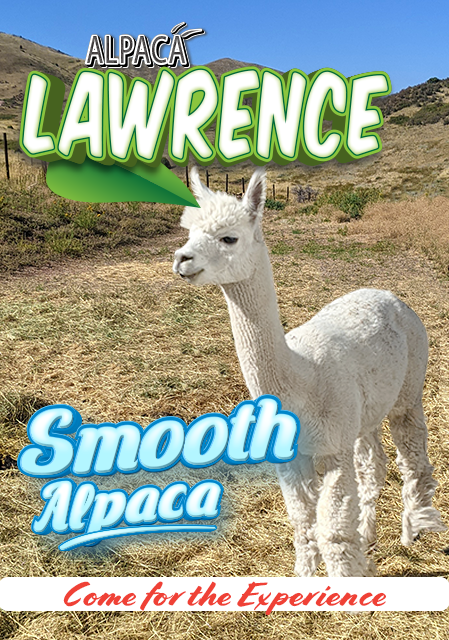Top rated alpaca adventures and holiday recommendations in Colorado: The best way to get a sense of how alpacas are cared for is to visit the farm. It is a unique and fun experience, and kids love it! They can help feed the animals, clean stalls, and fill water buckets. It is a great way to teach responsibility, and it teaches them that even the little things make a big difference. The farm also demonstrates the diversity of income opportunities that can come from owning livestock. The quality of the herd, the acreage required, and the amount of work needed can have an impact on overall income results. Find extra info on alpaca experiences in Colorado.
Understanding the economics of alpaca farming before investing in these animals is important. It is also a good idea to engage an accountant or tax specialist for guidance in setting up bookkeeping systems and determining the appropriate deductibles and allowances to apply to your particular situation. Alpacas are herd animals, and they thrive in social environments. They are primarily herbivores and subsist on a diet of grasses and hay, so pasture management is an important part of their overall well-being. Regular health checkups, vaccinations, and shearing are other important aspects of their overall care.
Get ready for an Alpaca Adventure ! A Wildly Immersive and Hilarious Alpaca Adventure Perfect For All Ages : Embark upon an unforgettable magical experience with affectionate Alpacas, and explore the scenic mountain views of Red Rocks Park. We offer truly unique experiences that gets you up-close with these majestic friends. You’ll be entertained and educated on their habits, diets, and life on the ranch as you discover what makes these creatures so special.
As herbivores, alpacas only eat vegetation. They eat mostly grass, but their diets can also include leaves wood, bark or stems. Like other ruminants, alpacas have a three-chambered stomach that digests the roughage efficiently. Unlike other grazers, alpacas don’t eat much. According to the Alpaca Owners Association, a 125-lb. (57 kg) animal only eats around 2 lbs. (907 grams) per day. In general, alpacas eat 1.5 percent of their body weight each day.
All members of your group will have the opportunity to participate in a fully interactive experience. It typically lasts around 1 hour and 30 minutes. Its environment is ideal for nature lovers : Most people who live in Colorado love the outdoors because the state offers a little bit of everything. Even if you’re just visiting for the weekend, you can embrace all that nature has to offer. An alpaca ranch offers stunning scenery and a relaxing atmosphere where you can take in the fresh air. Are you looking for an educational opportunity for your kids? Come enjoy an alpaca experience that’s not only fun but also informative. This alpaca experience takes place on a fiber farm. This type of farm raises animals like alpacas, sheep, goats, llamas, angora rabbits, and more for their fleece and wool.
What is an alpaca? Alpacas (vicugña pacos) are members of the Camelid Family and are a domesticated species of the South American camelid. Camelids originated in North America over 40 million years ago. Camels migrated east via the Bering Strait and llamas migrated to South America. Today there are five recognized camelids breeds: camels, llamas, guanacos, alpacas, and vicunas. They vary by size and purpose, some being used primarily as pack animals and others valued for their fiber. All are used in a secondary meat market. Camels, llamas, and alpacas have been domesticated for thousands of years, whereas guanacos and vicunas continue to roam freely in herds. Many people are familiar with humped camels: the dromedary of Northern Africa, the Middle East, and Southern Asia, and the Bactrian camel of China and Tibet. Next in size is the llama (domesticated guanaco), followed by the alpaca (domesticated vicuna). Discover even more details on https://meetalpacas.com/.
Are alpacas easy to care for? Alpacas are a small and relatively easy livestock to maintain. They stand about 36′ high at the withers (where the neck and spine come together) and weigh between 120 to 200 pounds. Like other types of livestock, alpacas need basic shelter and protection from heat and foul weather. Good nutrition is essential for healthy animals. Hay, minerals, and fresh clean water should be available at all times. Many alpaca owners also provide a nutritional supplement. Under a veterinarian’s direction, alpacas need vaccinations, preventive medication, and deworming. Alpacas also require yearly shearing to keep them cool in the summer. Alpacas do not have hooves; instead they have two toes, with hard toenails on top and a soft pad on the bottom of their feet. Their padded feet minimize the impact on the pasture. To ensure proper foot alignment and comfort, their toenails must be trimmed as needed.
Alpacas have two sets of teeth for processing food. They have molars in the back of the jaw for chewing cud. In the front, alpacas have teeth on the bottom only and a hard gum (known as a dental pad) on the top for crushing grain, grass, or hay. Unlike goats and sheep that have long tongues which can rip plants out of the ground, alpacas have short tongues and nibble only the tops of grasses and other plants. This results in less disturbance of the vegetation. Alpacas will often eat shrubs or the leaves from trees if given the opportunity. This requires monitoring to ensure they do not consume harmful products.
Wild guanacos and vicuñas live in a wide range of habitats, from the high and dry Atacama Desert in northern Chile to the wet and stormy Tierra del Fuego at the southern tip of the continent, according to the ADW. Alpacas are also native to the Andes, at elevations of up to 15,750 feet (4,800 meters). Alpacas, however, are very adaptable and have been exported all over the world, including the United States, New Zealand, Australia and the Netherlands, so their “habitat” is often farmland. Still, 99 percent of the world population of alpacas is found in South America, according to the ADW.



